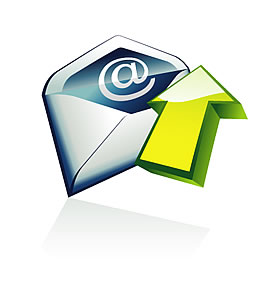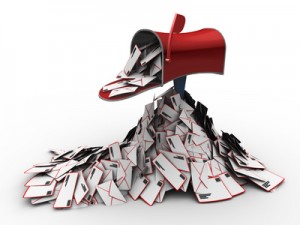To Collect Email Addresses from Your Blog. Easy Ways.

Large and small companies as well as individuals around the world use an excellent direct response tactic as email marketing to boost profits and sales. Generally, the budget of small businesses is not big to purchase targeted email marketing lists to send email marketing messages. That’s why it is a challenge to collect email addresses. Your blog can be easily used to gather email addresses who opt-in to get marketing email messages from you. To collect email addresses is free and easy when using the following tips.
Ask to opt-in
People who read your blog can be asked to opt-in to receive your messages in future. Create a reasonable marketing message that will motivate your readers to subscribe. Draw the interest with more informative and attractive submission form. You may offer special discounts or data about some events that is far more interesting for visitors than just some additional info or news. Your marketing message is better to include a submission form with a subscription link as well as with the form where it is easy to input an email address. One click of the mouse should separate you and your readers.
A blog competition
Blog competition may be a perfect way to collect email addresses and draw attention to your blog. Promote the competition of your blog offering a great prize. Let people provide their email addresses when they enter the competition. Don’t forget to announce them about exclusive information about new products, news and discounts the entrants will get if they take part in the competition and provide their email address.
Use an advertisement
An ad graphic can be used to invite people to provide their email addresses for exclusive information and discounts. Your blog’s sidebar is a perfect place for an ad. Other blogs can be also used to place the ad in.
Tweeter
Use your Twitter profile to publish an update about exclusive offers and discounts they receive in the case of submission. A link can be included into your email sign up form. This will assist people to easy provide their email addresses.
Check POP3 And IMAP Via The Web

IMAP means Internet Message Access Protocol. It is a way of accessing electronic mail or bulletin board messages that are kept on a mail server. It permits an email program to access remote message stores as if they were local. An email stored on an IMAP server can be manipulated from a desktop computer at home or from a notebook computer while traveling. IMAP allows users to delete messages, move them between folders, and mark the ones that had been read or replied to. These procedures are all done locally. Post Office Protocol (POP), on the contrary, was designed to support “offline” message access. This mode of access is not compatible with access from multiple computers since it tends to sprinkle messages across all of the computers used for mail access. POP was meant to support ties the user to one computer for message storage and manipulation.
The following free of charge services allow you to check POP3 and IMAP Email Accounts Online.
Read more »
Fax To Email Services
The companies listed below make it possible to send and receive faxes without special fax hardware. It can considerably lessen the expenses on paper, ink, cartridge, etc. Besides, you can always send and receive faxes even when the needed equipment is not at hand.
Read more »
POP3 Email Services

POP3 email services retrieve emails from a remote server over a TCP/IP connection. using an email client such as Outlook Express or Eudora. Here are the best Free POP3 email services.
Read more »
Email Autoresponder Services

Here is the list of the most popular companies that provide email autoresponder tools – the programs that send a pre-written reply to anyone sending a message to the autoresponders e-mail address.
Read more »
Best Free Web Email Services

Here’s the list of the Web services that provide free Email Account.
Mail2World is the world’s only free email with unlimited storage. It provides an extensive set of useful and provocative features, designed to elevate service above all expectations for standard Web-based email. All the basics are here, plus such ground-breaking technologies as built-in language translation and human services like the 2,000 domain-name selection and user control of the site’s look-and-feel.
Storage Size: Unlimited
Attachment size: 50MB
Read more »
How to recognize Spam?

Generally, people known to you do not send you spam. Your email client’s address book usually includes contacts of these people, who may terrorize you but not spam. Your address book can appear to be a helpful tool to recognize spam. If there are some email addresses of your friends or relatives that are not contained in your email address book, add them to your contacts.
Mails from unknown senders can be assumed as spam. In case your inbox is rarely full of emails from persons not included in your address book, you can assume every message of this kind as spam. Such messages can be easily filtered to the Junk Mail folder and then checked. It is important to check this folder in order not to miss some messages that could appear to be of great importance for you. Somebody could change his/her email address.
Response/ challenge spam filters are built on the idea to admit only known senders. They make your email inbox spam free with no maintenance. The negative is the may filter good emails from unknown senders.
According to some legislative attempts of spam control, sometimes “ADV:” is included in the begging of the subject line. Spammers do that to make their unwanted emails appear legitimate. Based on this fact you can easily find messages with “ADV:” in the subject line as spam. You also can set up your spam filter to filter such messages to “Possible spam” folder or to delete them permanently.
You also can set up your spam filter to separate messages that are not included to any of your email addresses and in the Cc: or To: fields to the “Probably Spam” folder.
Obviously, spammers do never send their unwanted messages using their own email addresses. The From: field does not include their email address while this could reveal it to many of the spam recipients. They in their turn will shower angry letters on the spam senders. Nevertheless, it is always possible to find out the identity of junk mail senders and where an email was originated from. The spammer’s ISPtherefore can be easily informed about unwanted measures.
Although, there are other intenders who may send you unwanted messages. Having another aim, authors of viruses and worms provoke the similar result. Social engineering is very important when spreading worms. The most dangerous is that the malicious code can enter your system coming from trusted sources.
The infected computer’s owner email address also should not be included into the From: line. A virus filter will send them a notifying that their PCs are infected. This could caution them that is why real but casual email addresses are put in the From: line with worms. These email addresses are usually picked up from the email clients’ address books. Worms as well as spam hopefully care millions are their recipients.
Contrary to successful email delivery, failures are normally reported about. Worning “delivery failure” messages come when an email address was ever mistyped by you. They usually are not easy to parse but detailed.
Warning “delivery failure” messages should better be ignored. A virus or spammers can easily put your email address in the From: line. Be attentive when receive “delivery failure” of messages you are not the author. SpamCop is a spam analysis tool that can be also used to parse messages you receive.
Nevertheless, your PC is to be scanned for worms and viruses. Check your system for viruses as often as possible. If you don’t have any virus scanner, install any to prevent your computer to be infected. Too many delivery failure messages received can be prevented only by informing your ISP.

 Email Addresses
Email Addresses



